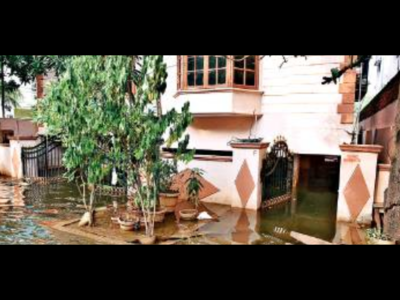The Times of India 02.03.2013
Regular repair secret of NDMC’s sturdy roads
NEW DELHI: The difference is stark. The roads in Lutyen’s Delhi are as
smooth as can be. And the maintenance work is unobtrusive—so much so
that you never get to notice if there is anything wrong with any road as
a result of wear and tear. The obvious conclusion could be that since
VVIPs live in this area, NDMC
is super efficient. That is not the entire truth, say officials of New
Delhi Municipal Council. A good drainage system and regular maintenance
explain why the roads are durable, they say.
The focus,
officials say, is on ensuring there is no waterlogging. Due to
waterlogging, the bitumen surface becomes weak and cracks. “When a road
is relaid, we first improve the drainage system. Also, there is green
cover on both sides of the roads which absorbs the water. As a result,
we don’t face the waterlogging,” said an NDMC official.
three municipal corporations, on the other hand, don’t undertake any
work for strengthening stormwater drains every time a road, especially
in residential colonies, is relaid. Though it routinely desilts drains,
waterlogging is common in the rest of the capital. Every year, Delhi
Traffic Police sends a list of stretches prone to waterlogging and civic
agencies claim every year close to 1lakh metric tonnes of silt is
removed. “If it rains continuously, we can’t do anything. Every year, we
carry out routine road repairs, especially before monsoon,” a North
corporation official said. Routine repairs on damaged stretches the year
round is one reason why NDMC roads are in such good condition. “We
immediately repair potholes. It is easier to fix a small pothole and
difficult to level the big ones as they reappear due to heavy traffic
flow,” said an NDMC official. Residents in other parts of the capital
claim civic agencies don’t fix potholes in time and the patchwork is
very poor. “I fail to understand why the area where the patchwork is
done is not leveled. The road is uneven and difficult to drive on,”
said Manish Khanna, a resident of Lajpat Nagar.
Road Research Institute (CRRI) had prepared a road maintenance plan in
2004 with recommendations for the civic agencies but it has not been
implemented. Experts say the life of a road can be prolonged if the
corporation does micro-surfacing, a practice common in the Lutyen’s
zone. A 4mm bitumen layer is laid and a chemical adhesion promoter added
which seals the crater. Instead of relaying the whole road, the upper
layer is removed and micro-surfacing done. For at least three years, no
repairs are required. “It is the cheapest and most effective
method…otherwise the road would have potholes,” said PK Jain, chief
scientist, CRRI.
NDMC has done micro-surfacing of close to 30 stretches. Officials say
roads that were dense-carpeted eight years back are still in a good
condition due to micro-surfacing. But the corporations say it’s
expensive affair. “Micro-surfacing adds only three years to a road’s
life. It is expensive and not good for roads with heavy vehicle
movement. PWD used it on two roads but it wasn’t successful,” said PK
Gupta, commissioner, North corporation. Gupta added that they also use
the stone mastic technique. “Stone mastic technique may make the road
more durable but the cost is high. It takes a month for the road to set
in but contractors open the road soon after the layer has cooled. It
doesn’t mean that the road has set in. It isn’t only costly, but a
hazard to environment as for preparing the aggregate, a temperature of
220 degree Celsius is needed which cause pollution. Instead of mastic,
micro-surfacing is a better option and nowadays it is being used even on
flyovers. Our experience in Hyderabad has been quite satisfactory,”
said Jain.
checks are the other factors for the terrible state of city roads. The
corporations, which are now making cemented roads using ready mixed
concrete technique, are still struggling to provide smooth roads. “If
the compaction is inadequate, there are voids. It is important that
quality checks are carried out,” said Jain.


